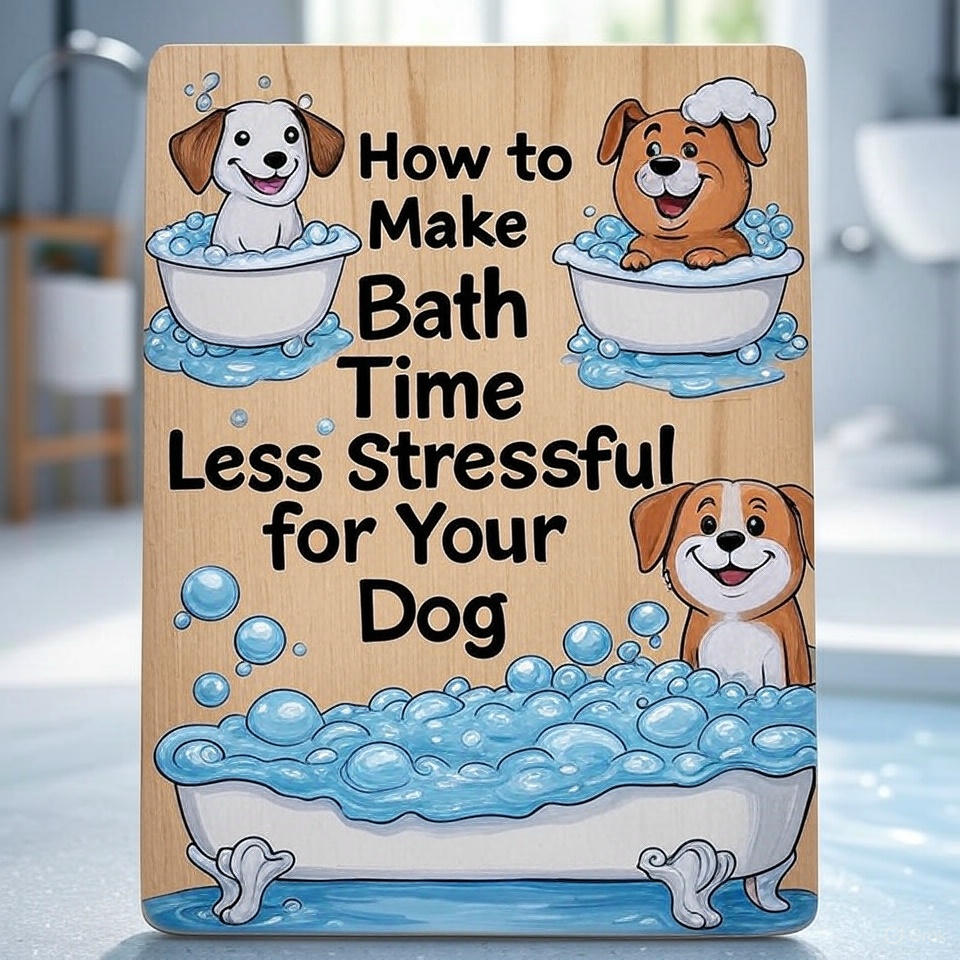What to Do When Your Dog Hates Baths
Some dogs don’t like baths, but sometimes it’s not about the water. Many dogs who love swimming cower in the corner of the tub when it’s time to get scrubbed up. It makes sense if you think about it. Being picked up, forced into a cold tub, and sprayed with water while you’re minding your own business doesn’t sound fun. While some dogs are reacting to the loss of control, others don’t like being cold, and some feel unstable on a slippery surface.
So how can you get your dog to stop freaking out when they need a bath? First, you need to understand what’s triggering your dog and then you can work on turning bath time into an enjoyable (or at least tolerable) experience.
1. Understand why your dog hates baths
The exact reason your dog hates baths might not be immediately obvious, but start working with some of the most common reasons:
· Loss of control. Being dragged into a tub, confined, and handled extensively can make dogs feel vulnerable and stressed out. This lack of autonomy is a significant cause of bath time discomfort.
· Uncomfortable water temperature. If the water is too hot or too cold, your dog will come to hate baths. Make sure the water is lukewarm to make the experience more comfortable. If you’re using a sprayer, run it for a few seconds to make sure the water coming out is warm since cold water will collect in the hose.
· A slippery tub. If you don’t have a tub mat, a slippery tub can make your dog feel anxious. Put a non-slip mat or stickers in the tub for a better experience.
· Negative associations. Some dogs have experienced traumatic baths in the past. To overcome this association, you’ll need to create positive associations with bath time.
If your dog shakes just looking at the tub, start slowly. Put some treats in the tub to encourage your dog to go in on their own. When you can get them used to the tub being a safe place, it will start to rewire their nervous system and they won’t automatically freak out in the bathroom.
2. Train your dog
Dog obedience training isn’t just for getting your dog to do what you say. Dog training actually helps your dog trust you more, reduces anxiety, and supports their need for structure. Training can play a significant role in reducing your dog’s bath time anxiety. For instance, teaching them simple commands like “sit” or “stay” can help you manage their behavior and make baths smoother.
Beyond teaching your dog basic commands, professional dog training can provide you with personalized strategies to help your dog become more comfortable with bath time. When you hire a professional dog trainer, they’ll help you and your dog with other situations that trigger anxiety or fear.
3. Only bathe your dog when necessary
With some exceptions, dogs don’t need baths as often as humans. If your dog hates baths, try bathing them less often so they don’t have to experience anxiety regularly. Unless they’ve rolled in something stinky and gross, you can probably get away with using wipes most of the time or scheduling occasional professional grooming at Fluffy Pet Wash to keep their coat clean and healthy without frequent stress.
4. Brush your dog first
Sometimes bigger dogs seem fine at first, but get impatient toward the end of a bath, right when you’re trying to rinse off the shampoo. You can make bath time shorter by brushing your dog first. If they have a thick coat, brushing out their undercoat will help a lot.
5. Use a lick mat loaded with a treat
Some dogs calm down instantly when they have a distraction. Try using a lick mat loaded with peanut butter. Lick mats stick to the tub with suction cups and will keep your pup busy licking long enough for you to get them bathed.
6. Try bathing your dog outside
If your dog associates being outside with fun, you might have an easier time bathing your dog outside. This works well with dogs who already love running through sprinklers and go crazy when they see a hose. Try making bath time a game at first to get them used to the water, and then reel them in for a real bath.
Turn bath time into bonding time
Bath time doesn’t have to be something you or your dog dread. By understanding your dog’s fears, doing what you can to reduce their anxiety, and taking it slow, you can transform bath time into a more positive experience.






